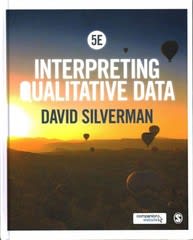Question
Harvey is a 45-year-old male who presents in your private practice after calling for an appointment. He is vague about his presenting problem on the
Harvey is a 45-year-old male who presents in your private practice after calling for an appointment. He is vague about his presenting problem on the phone, and arrives somewhat late for the appointment. His mood is euthymic (fair) and his affect broad (normal), and he appears generally in good spirits. When asked about his presenting problem, he explains that he has a slight problem and is wondering if you can help him. He explains that he is a truck driver (long haul, 18- wheeler) and needs to stay awake for long periods. To stay awake, he has been snorting "crystal Meth" (methamphetamine), and is able to drive much further without stopping. Further discussion reveals that he has been using this drug for at least 10 years. When he has used the drug in the past, he has become aggressive with others (including his girlfriend) and been arrested. His most recent girlfriend left him when she became aware of his use. Harvey seems reluctant to say much about his use, and admits that he has had been using more and more meth to get the same effect. At first, it was just when I was driving, but then I started to use it when I was partying with friends. He reports he tried quitting probably twenty times, but eventually gave up. I would stop using for a couple of days, and I would feel awful. I was tired, irritable and had some terrible dreams". As the meeting goes on, he reluctantly explains that he needs a letter for court this afternoon, stating that he is in treatment.
PlPlease offer your own comprehensive diagnostic assessment for the client in the case study. Include any behavioral, emotional, psychological, social and cognitive factors/symptomatology and duration. Also, include protective/strength factors and risk factors in the case study.
2. Provide a comprehensive diagnosis based on the information documented in your assessment.
3. Differential diagnosis is the process of weighing the probability of one disorder versus that of other disorders possibly accounting for a client's illness. For this case study, what other diagnoses did you consider and why did you rule them out to provide the comprehensive diagnosis above?
Step by Step Solution
There are 3 Steps involved in it
Step: 1

Get Instant Access to Expert-Tailored Solutions
See step-by-step solutions with expert insights and AI powered tools for academic success
Step: 2

Step: 3

Ace Your Homework with AI
Get the answers you need in no time with our AI-driven, step-by-step assistance
Get Started


